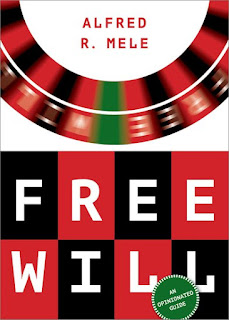 Academy. Chapa has published on military ethics in academic journals including Social Theory and Practice and The Journal of Military Ethics, and in online venues such as War on the Rocks and The Strategy Bridge. He currently leads the Artificial Intelligence Cross-Functional Team in Air Force Futures and serves as the Department of the Air Force's chief responsible AI ethics officer.
Academy. Chapa has published on military ethics in academic journals including Social Theory and Practice and The Journal of Military Ethics, and in online venues such as War on the Rocks and The Strategy Bridge. He currently leads the Artificial Intelligence Cross-Functional Team in Air Force Futures and serves as the Department of the Air Force's chief responsible AI ethics officer.
Chapa applied the Page 99 Test to his new book, Is Remote Warfare Moral?: Weighing Issues of Life and Death from 7,000 Miles, and reported the following:
From page 99:Visit Joseph O. Chapa's website.Just because moral injury is separate from, and often lacks the acute trauma of, post-traumatic stress disorder (PTSD), it is no small thing. Long before the term moral injury was coined, [J. Glenn] Gray described it—and the way a soldier might respond to it—in combat:There is one sense in which the book fails the Page 99 Test, and another in which it performs exceptionally well. The book fails the test in that page 99 invites the reader to wade deeply into subject matter that might seem out of place given the book’s topic. There is no mention here of remote warfare, of “drones,” of the US’s post-9/11 wars, or of the Predator and Reaper aircraft and their crews. Page 99 is about the distinction between post-traumatic stress disorder and moral injury—two terms that might fit more naturally in a book about psychology than one about morality. One could read page 99 and yet have no idea that this book is about the morality of remote warfare.
It is a crucial moment in a soldier’s life when he is ordered to perform a deed that he finds completely at variance with his own notions of right and good. … he discovers that an act someone else thinks to be necessary is for him criminal. … He feels himself caught in a situation that he is powerless to change yet cannot himself be part of. The past cannot be undone and th present is inescapable. His only choice is to alter himself, since all external features are unchangeable. (Gray, The Warriors, 184)
Moral injury, of course, falls on a spectrum. Perhaps not all examples will be as life-changing as those Gray describes. He seems to suggest here that a soldier must “alter himself” only if the task he is required to perform is, in some sense, beyond the pale—so far outside what he believes to be morally justifiable that he knows that committing the act will injure him. And moral injury is often characterized by feelings of guilt and shame. The counterintuitive revelation from a number of recent studies, however, is that combatants can experience moral injury even when the acts they commit are morally justified and even when they commit no wrong. This finding is a surprising phenomenon. Taking a human life can be a traumatic thing, even when doing so is morally justified, as it often is in war.
And yet, there is another sense in which the Page 99 Test points readers to a thread that is woven throughout the book’s other pages: if we are to understand remote warfare, we must look, not just to modern military technology and not just to the post-9/11 “global war on terror,” but to the broader context: to the long history of airpower, to two millennia of just war thinking, and to enduring features of human nature, to include moral psychology.
Even if, as Ford Madox Ford suggests, the quality of this book should be revealed on page 99 (and I’ll leave that determination to readers), the scope of the book, in this case, will not be. To engage with (notice, I do not say “to answer”) the question, is remote warfare moral, I have looked closely at the warrior ethos, at moral justifications for killing in war, at military virtue, at the history of war, and yes, of course, at moral psychology. My own view is that these questions are not simple, and their answers are not obvious. But as the age of “drones” quickly ushers us into the age of military artificial intelligence and lethal autonomous weapons systems, it is crucial that we ask them.
--Marshal Zeringue
























